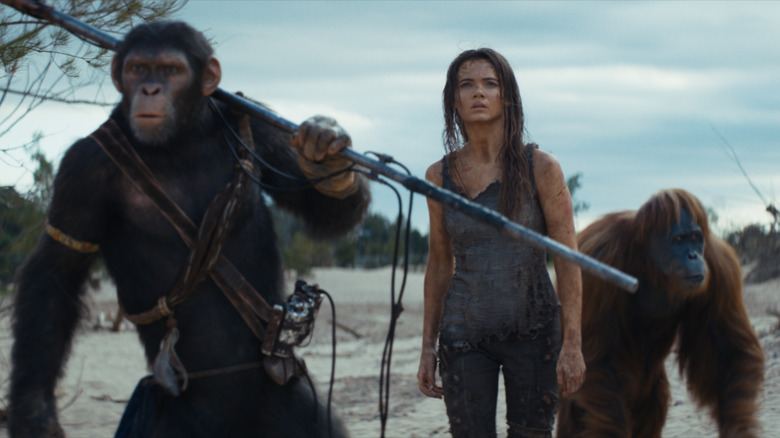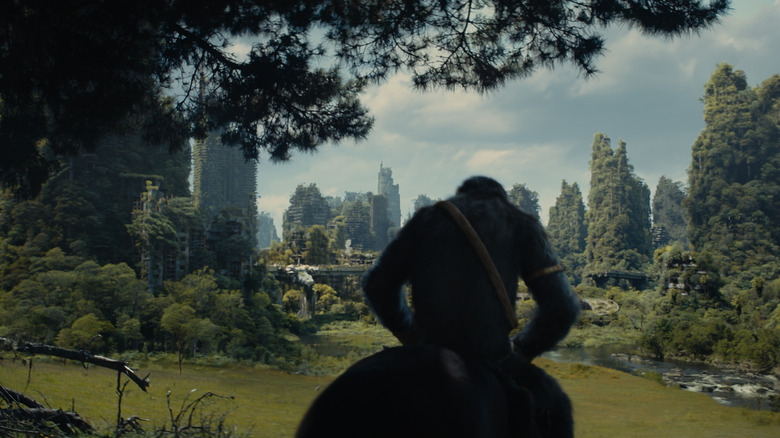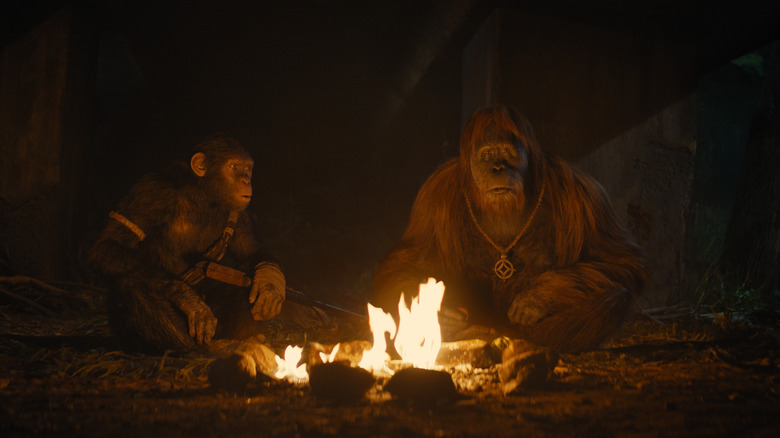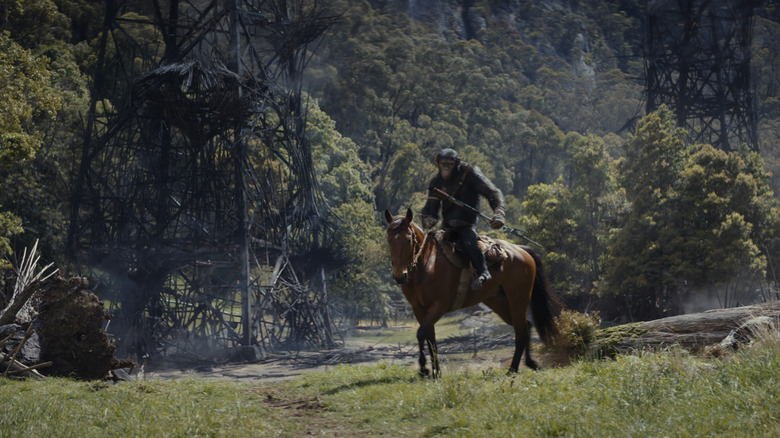Kingdom Of The Planet Of The Apes Is The Greatest Argument Against AI 'Art'
Earlier this week, the Apple corporation released a commercial for its upcoming iPad Pro product. The commercial itself was less a positive demonstration of the new iPad and more of a sadistically gleeful ode to the encroaching dominance of the tech industry: in the spot, objects of human creativity are crushed into oblivion, and it's then revealed that the iPad has replaced all of what has just been decimated.
The commercial immediately came under criticism on social media, so much so that Apple had to issue a public apology a day later. While the ad is undeniably awful, the widespread, vitriolic backlash it received feels like a bubble bursting, as the ad's subtext seems to be the same core concept at the heart of generative AI programs: replace as many human beings as possible, at any cost.
Generative AI is undeniably a morally suspect and corrupt technology, seeing as how it needs to plagiarize the work of millions in order to function at all. Even if it didn't, it would still be incredibly distasteful; not only is the tech borne out of laziness (not to mention jealousy at those who've spent years honing a skill), but the end products always look barely passable, with too many uncanny valleys and the like making their output displeasing to the eye.
Fortunately, you can protest generative AI without needing to fully become a Luddite, for there are many examples of great, actual art that uses a mixture of high-tech and human creativity for motion pictures. One of those examples is in theaters now: "Kingdom of the Planet of the Apes," a film that couldn't have been made as great as it is without a collaboration between computers and humans.
'Kingdom' presents the ideal version of a fantasy world
The "Planet of the Apes" franchise has always been about inventive creativity. The original 1968 film featured groundbreaking prosthetic makeup work by John Chambers and his crew that sold the idea of the apes as characters, and their efforts eventually earned them an Academy Award for the film. That inventive ethos continued through the film's original sequels all the way through to 2011's reboot "Rise of the Planet of the Apes." Between actor Andy Serkis and Wētā Digital's artists and crew, the character of Caesar became a photoreal digital character animated and portrayed by humans.
While "Rise" is the only installment fully set in our then-present day, the following two sequels take place in a still recognizable (if devolving) Earth. "Kingdom," set generations after the fall of humanity, is the first "Apes" film since 1973 that takes place in a world almost totally unrecognizable from our own.
Although this setting may have given another filmmaker license to utilize lots of technology to create the backdrop of the film in a "Star Wars" prequel fashion, director Wes Ball makes a point of shooting the movie almost entirely on location. Sure, numerous shots are augmented with elements such as derelict skyscrapers overgrown with moss and the like, but nevertheless, Ball told Collider that "We probably had one blue screen set on the movie." The resulting film feels not only credibly fantastic but grounded enough so as to make the audience easily invested in the ape characters. Although generative AI could mimic the designs of the apes to a degree, the tech's uncanny wrongness and bland copy-of-a-copy process would never allow audiences to sit through (much less care about) a film set in a world with slightly more definition than an oil slick.
The CG of 'Kingdom' is a perfect synthesis of man and machine
Of course, the core of the modern "Apes" films are the ape characters themselves. After further advancements in both the rest of the "Apes" reboot trilogy as well as projects like Cameron's "Avatar: The Way of Water," Wētā has all but perfected the art of taking an actor's work and translating it into a fantasy creature, with key embellishments added by a team of artists during the animation phase. Wētā's work on "Kingdom" is nothing short of stunning, and continues the process and ethos begun decades ago on "Lord of the Rings" and "Avatar." When I spoke to "The Way of Water" senior animation supervisor Daniel Barrett back in 2022, he said that not only does his team seek to "bring the performances through" in their work, but that they've become incredibly detail-oriented thanks to recognizing how "every audience member is an expert in facial expression."
Though Wētā obviously had their long history to fall back on when working on "Kingdom," Ball is quick to point out that it didn't mean their task was easy. Not only do the bulk of the movie's 1600 shots involve a CG element, but Ball told Ape Nation that he was adamant that "Kingdom" be made in a more old-fashioned cinematic style, as opposed to something too distractingly modern. Even that bit of direction is anathema to the generative AI mentality, which promises everything at one's fingertips with no cause to consider such things as restraint, obstacles, or ingenuity. "Kingdom" is the product of both the latest technology and the people who know how to use it as a creative tool. Thus, something like generative AI — tech used solely as a shortcut — could never accomplish the look of this film.
The all-raw-dailies cut of 'Kingdom' will show how CG work is not generative AI
One reason why the campaign for generative AI has gained as much traction as it has is because the average person's conception of CG work is not all that different from AI in their minds. Unlike AI, the artists at Wētā and other effects houses don't merely press a few buttons, wait for a computer to do the work, and then hand it over. They spend hours and hours (perhaps too many, but that's another story) working frame-by-frame on hundreds of shots; it's work that's not as initially easy to understand as, say, putting makeup on an actor, but it's still work.
To demonstrate just how much of an effort it is, Ball states in that aforementioned interview that he and 20th Century Studios will include a full alternate cut of "Kingdom" when it releases on home media: a version of the film that's all raw dailies, just to show the disparity between the pre-Wētā and post-Wētā images. Even though VFX breakdowns have been a thing for years now, they tend to focus on just a few sequences. Showing the entire film in a raw state should help convey the enormity of the work accomplished on "Kingdom," as well as so many other movies made today.
It also exposes the biggest lie about AI "art." If a device is doing something entirely for you, then you have had no say in its creation; you can't say you're a chef if you exclusively cook microwave meals, right? "Kingdom" is proof that human beings and technology can create massive, money-making, inspiring art together. You only get what you give; generative AI is such a soulless shortcut that even a monkey wouldn't feel right using it.



